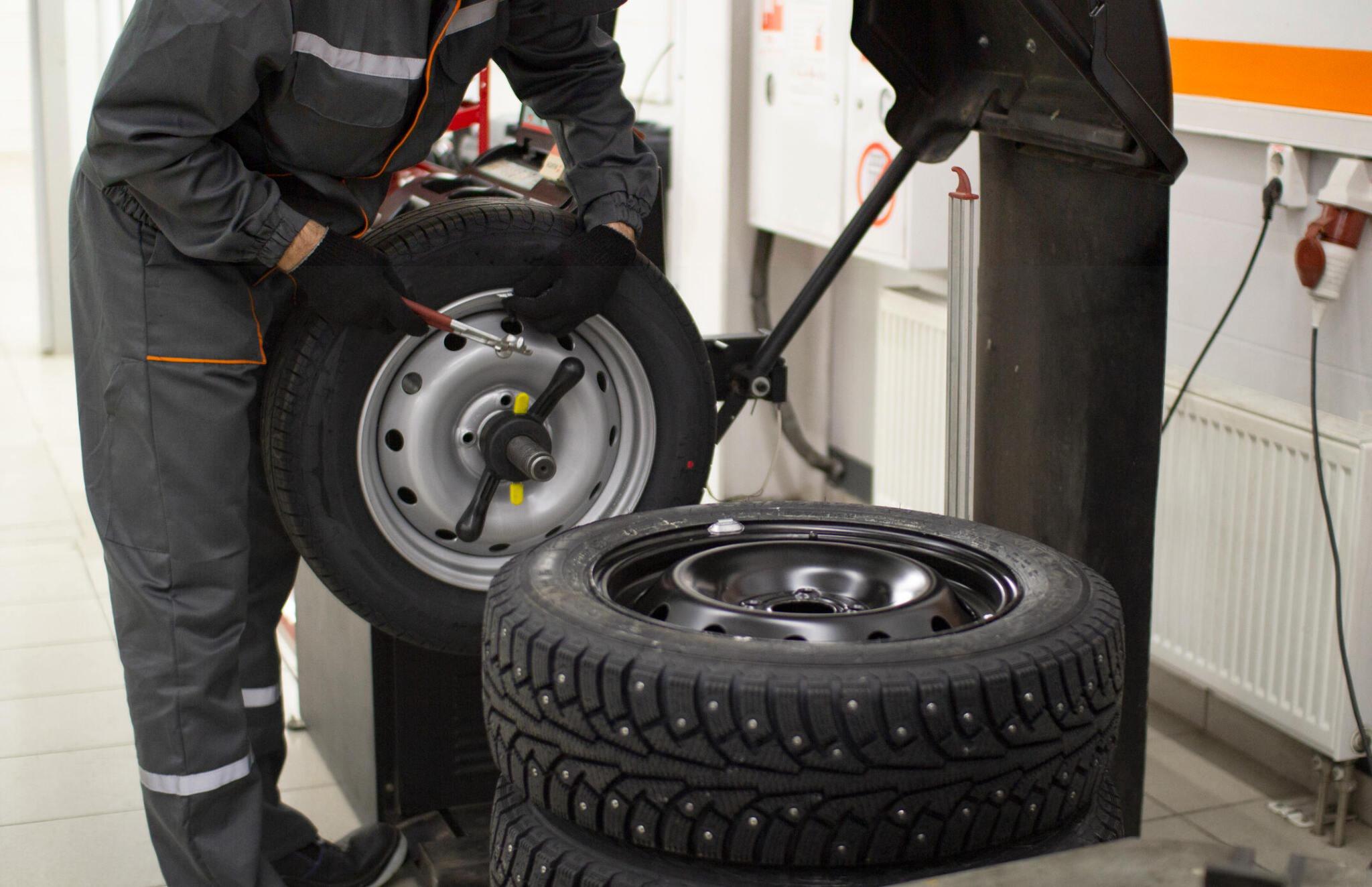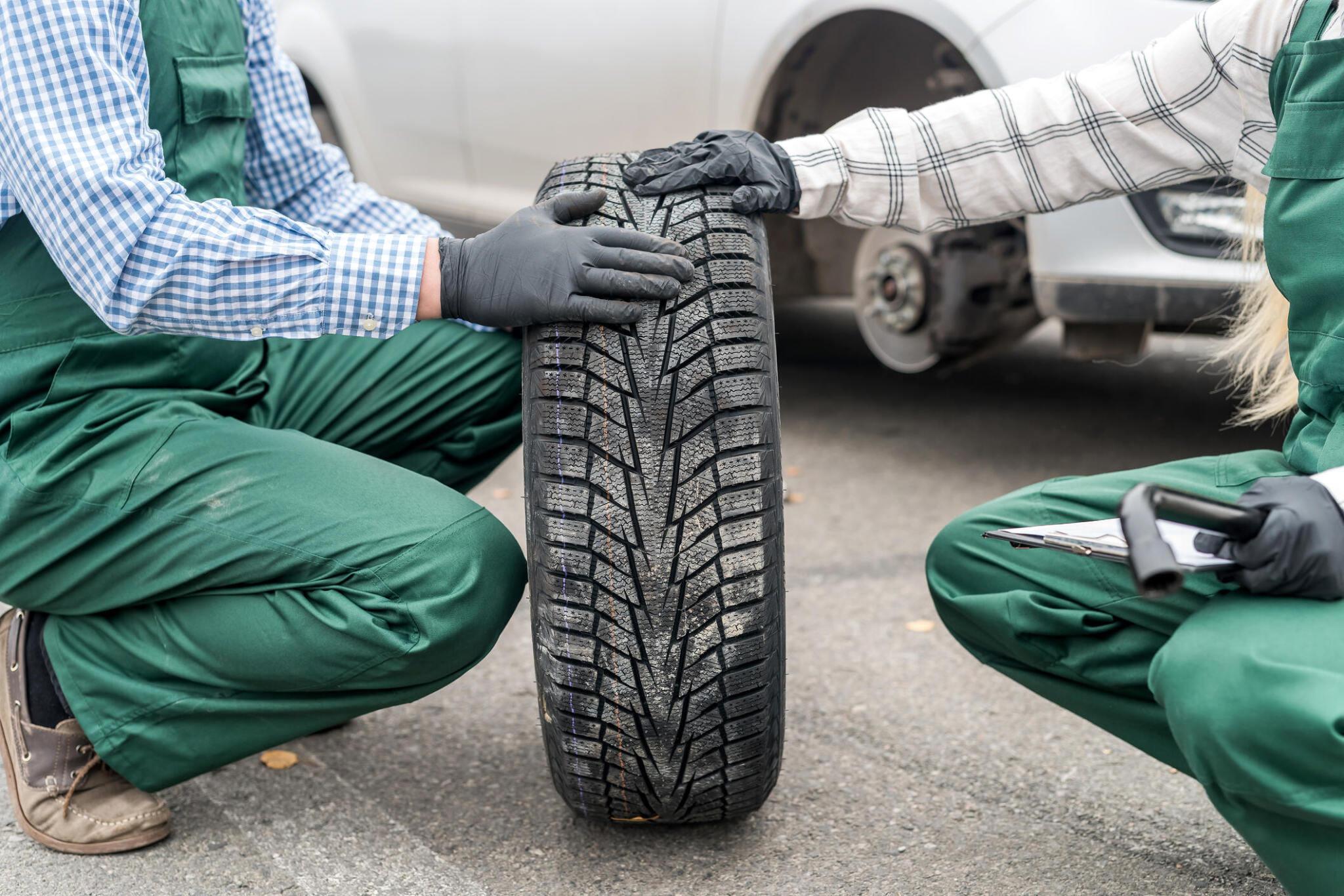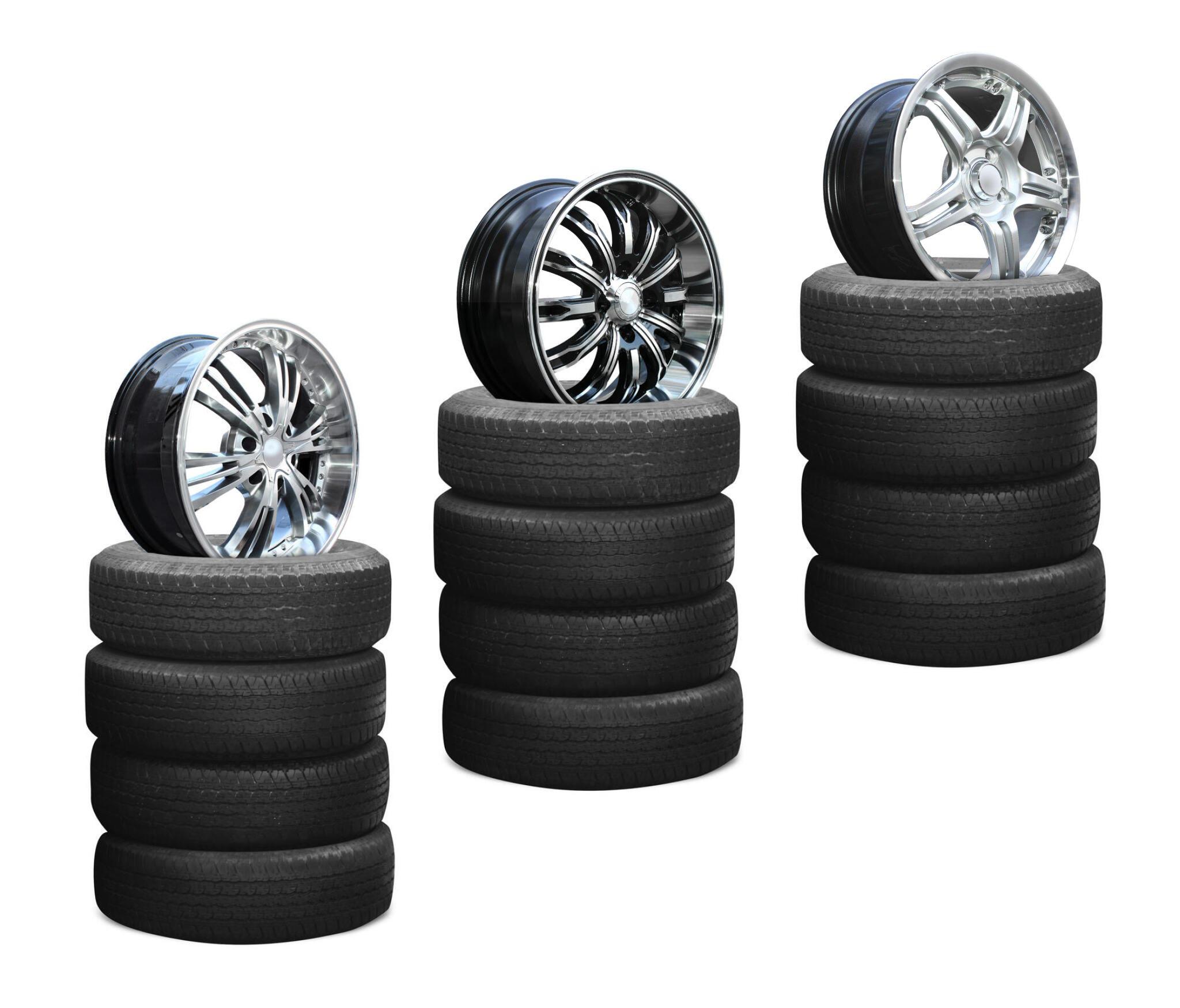Last Updated on July 25, 2025
The Advantages of Expert Tire Installation
Installing tires on a vehicle is an important task that directly impacts its performance, safety, and overall handling characteristics. While it might seem straightforward, tire installation involves more than just fitting a tire onto a wheel. It requires precise alignment, balancing, and adherence to specific torque specifications to ensure the tire performs optimally and safely.
Overview of Tire Installation
Understanding the process of tire installation is essential for vehicle owners looking to ensure the safety and performance of their vehicles. This section provides a comprehensive overview of tire installation, covering everything from tire selection to the final alignment check.
Whether you’re a seasoned driver or new to vehicle maintenance, gaining insight into this procedure will empower you to make informed decisions about your tires.
Tire Installation Process
Tire installation is a multi-step process that begins with selecting the vehicle’s appropriate tire size and type. Once the right tires are chosen, the process involves:
- Removing the Old Tires: This step requires lifting the vehicle using a jack and removing the wheels.
- Mounting New Tires: The new tires are placed onto the wheels, ensuring they fit correctly. This step must consider the tire’s directionality and sidewall requirements.
- Sealing and Inflating: After mounting, the tires are locked onto the wheel rims and inflated according to the manufacturer’s recommended pressure.
- Balancing: Tires are balanced to ensure even weight distribution around the axle. Unbalanced tires can lead to vibrations, uneven tire wear, and other driving issues.
- Alignment Check: A wheel alignment check is often performed to ensure the tires are positioned correctly relative to the road and each other.
- Tools and Equipment: Professional tire installation requires specialized devices such as tire changers, wheel balancers, alignment machines, and torque wrenches to ensure the job is done correctly and safely.
Importance of Professional Installation
Professional installation is vital in our lives, from vehicle safety to home appliances. It is essential to rely on trained experts to ensure correct and precise installation and peace of mind regarding your vehicle’s safety. There are some things to consider regarding professional installation, including:
Safety Considerations
Professional installation is essential for safety reasons. Incorrectly installed tires can lead to poor vehicle handling, increased stopping distances, and tire blowouts. Professionals have the training and expertise to ensure that the tires are installed correctly, reducing the risk of accidents.
Expertise and Experience
Professionals bring years of experience and knowledge about different types of tires and vehicles. They can advise on the best tires for a specific vehicle and driving conditions. Their expertise also extends to understanding the specifics of tire pressure, tread patterns, and wear indicators, which are vital for maintaining tire health and performance.
Quality Assurance
When professionals install tires, there’s an implicit assurance of quality and adherence to standards. Professional installers use calibrated equipment to ensure that the tires are balanced and aligned accurately, which is hard to achieve with DIY methods.
Warranty and Liability
Many tire manufacturers require professional installation to keep the warranty valid. DIY installation might void the warranty, leaving the vehicle owner responsible for any damage or defects. Additionally, professional installers often provide a service warranty, offering peace of mind and protection against installation errors.
Time and Convenience
Professional installation is also a matter of convenience and time-saving. While DIY tire installation can be time-consuming and requires specific tools, professional installers can complete the task efficiently with the right equipment.
While tire installation might seem simple, it involves critical steps that demand precision and expertise. Professional installation ensures safety, quality, and compliance with warranty requirements, making it a prudent choice for vehicle owners.

Understanding Tire Installation
Tire installation is a meticulous process involving several crucial steps and specialized tools and equipment. Understanding the basics of tire installation and the tools involved is essential for appreciating the complexity of this task.
Basics of Tire Installation
Understanding the basics of tire installation will provide valuable insights into how it can contribute to a smoother, safer, and more efficient driving experience.
Below are the basics of tire installation:
1. Tire Selection
- The process begins with selecting the right tires for your vehicle. This decision should consider factors like tire size, type (e.g., all-season, summer, winter), and the vehicle’s manufacturer recommendations.
- It’s essential to ensure that the selected tires are compatible with your vehicle’s specifications to optimize performance, safety, and longevity.
2. Removal of Old Tires
- Before new tires can be installed, the old ones must be removed. This process requires lifting the vehicle using a jack and securely supporting it on jack stands.
- Once the vehicle is safely raised, the lug nuts are loosened and removed, allowing the old tires to be removed.
3. Mounting New Tires
- The new tires are carefully mounted onto the wheel rims. Attention must be given to ensure that the tires are oriented correctly, considering factors like directional tread patterns and sidewall markings.
- Proper mounting ensures the tires perform as intended and reduces the risk of issues like vibration during driving.
4. Sealing and Inflating
- After mounting the new tires, they are sealed onto the wheel rims using a bead sealer.
- The tires are then inflated to the recommended air pressure specified by the vehicle manufacturer. Over or under-inflated tires can negatively impact performance and safety.
5. Balancing
- Balancing is critical to ensure that the weight distribution of the tire and wheel assembly is uniform.
- Balancing is achieved by attaching small weights to the wheel to counteract imbalances. This will reduce vibrations and prevent uneven tire wear.
6. Alignment Check
- A wheel alignment check may be performed to ensure the tires are correctly positioned relative to the road and the vehicle’s specifications.
- Proper alignment contributes to even tire wear, improved fuel efficiency, and better vehicle handling.
Tools and Equipment Used
Professional tire installation requires specialized tools and equipment to perform the tasks accurately and safely. Some of the essential tools and equipment include:
1. Tire Changer
- A tire changer is a machine used to remove and mount tires on wheel rims. It consists of a mount and demounts head, bead breaker, and other components.
2. Wheel Balancer
- A wheel balancer is a device that checks and corrects imbalances in a tire and wheel assembly. It ensures that the weight is distributed evenly.
3. Jack and Jack Stands
- These tools are used to lift the vehicle safely off the ground to access the tires.
4. Torque Wrench
- A torque wrench tightens lug nuts to the manufacturer’s recommended specifications. Proper torque is essential to prevent over-tightening or under-tightening.
5. Bead Sealer
- Bead sealer is a compound applied to the tire’s bead area to create an airtight seal when mounting the tire on the wheel rim.
6. Alignment Machine
- An alignment machine is used to check and adjust the alignment of the wheels to ensure they are parallel and perpendicular to the road surface.
7. Compressed Air Source
- An air compressor is required to inflate the tires to the recommended pressure.
Understanding these basics and the tools used in tire installation highlights the precision and expertise required for this essential automotive task. Professional installers have the training and equipment to ensure that tires are installed correctly.
Benefits of Professional Tire Installation
Professional tire installation offers several advantages over DIY (Do-It-Yourself) approaches. This section will explore the key benefits, including ensuring correct installation, safety considerations, and time efficiency.
Ensuring Correct Installation
When it comes to tire installation, precision and expertise are necessary. Professional installers bring knowledge, ensuring every installation process is carried out meticulously.
From understanding tire specifications to using torque wrenches for precise tightening, their attention to detail minimizes the risk of alignment issues, uneven wear, and uncomfortable vibrations during your drive. Additionally, balancing tires is essential, contributing to a smooth and enjoyable ride while prolonging tire life.
There are critical elements that professionals employ to guarantee correct tire installation, including:
1. Expertise and Precision
- One of the foremost benefits of professional tire installation is the expertise and precision that trained technicians bring. They have in-depth knowledge of tire specifications, including size, type, and tread pattern.
- Professionals ensure that tires are mounted correctly, minimizing the risk of issues such as improper alignment, uneven wear, and vibration during driving.
2. Proper Torque Specifications
- Professional installers use torque wrenches to tighten lug nuts to the manufacturer’s recommended specifications. This is crucial for maintaining the integrity of the tire and wheel assembly.
- Correct torque helps prevent over-tightening or under-tightening, which can lead to safety hazards.
3. Balancing for Smooth Ride
- Balancing tires is a significant step in tire installation; professionals use specialized equipment to achieve it.
- Adequately balanced tires contribute to a smooth, comfortable ride and prevent premature wear.
Safety Considerations
Safety should always be at the forefront of our concerns regarding tire installation. Incorrectly installed tires can lead to serious safety hazards on the road, including accidents and blowouts.
Professional installers prioritize safety by meticulously following strict protocols to secure tires and ensure all safety measures are in place. They also conduct alignment checks, which enhance vehicle stability and minimize tire wear, contributing to safer and more efficient driving.
Here are some of the precautions that professional installers take when installing tires:
1. Reduced Safety Risks
- Safety is paramount when it comes to tire installation. Incorrectly installed tires can pose significant safety risks, including loss of control, blowouts, and accidents.
- Professional installers follow strict safety protocols to ensure that tires are installed securely and that all safety measures are in place.
2. Alignment Checks
- Professional installers often perform alignment checks as part of the tire installation process. Proper wheel alignment enhances vehicle stability, reduces tire wear, and improves handling.
- This alignment check ensures the vehicle’s steering and suspension components function correctly.
3. Adherence to Manufacturer Guidelines
- Professional installers adhere to manufacturer guidelines for tire installation. They are familiar with the specific requirements of different vehicles and tire brands.
- This adherence ensures that the tires are installed in a manner that maintains the vehicle’s warranty, where applicable.
Time Efficiency
Professional tire installers understand the value of your time and bring a quick and efficient service to the table. With access to specialized equipment and a skilled team of technicians, they ensure the installation process is completed swiftly, minimizing downtime and inconvenience for vehicle owners.
Choosing professional installation saves you time and relieves you of the need for DIY efforts, especially beneficial for those lacking the tools or experience.
Below are the time-saving advantages that professional tire installation offers:
1. Quick and Efficient Service
- Professional tire installers have access to specialized equipment and a team of technicians, allowing them to complete the installation process quickly and efficiently.
- This means less downtime for vehicle owners, minimizing inconvenience.
2. No Need for DIY Efforts
- Opting for professional installation eliminates the need for vehicle owners to invest time and effort in the often complex and physically demanding process of tire installation.
- This is particularly advantageous for individuals needing more tools or experience to perform the task themselves.
3. Focus on Additional Services
- Professional installers can offer additional services such as tire balancing, alignment checks, and disposal of old tires.
- Vehicle owners can benefit from these supplementary services without the hassle of DIY work.
Risks of DIY Tire Installation
While some vehicle owners may attempt to install tires themselves, there are significant risks associated with DIY tire installation. This section will examine these risks in detail, including potential mistakes, consequences, and safety risks.
Potential Mistakes and Their Consequences
While the idea of DIY tire installation may seem appealing, it comes with the risk of potential mistakes that can have serious consequences. These mistakes can compromise safety, vehicle performance, and tire longevity.
Here are some potential pitfalls you should be aware of to serve as a reminder of the importance of professional tire installation:
1. Incorrect Tire Size
- One common mistake in DIY tire installation is selecting the wrong tire size. Using tires that are too small or too large for the vehicle can lead to handling problems and safety issues.
- Consequence: Poor vehicle handling, reduced traction, and potential tire damage.
2. Improper Tire Orientation
- Incorrectly mounting tires in the wrong direction or orientation can decrease performance and safety hazards.
- Consequence: Reduced tire grip, compromised braking, and increased risk of hydroplaning on wet roads.
3. Uneven Tire Balancing
- DIY installers may need help to balance tires correctly, leading to uneven weight distribution.
- Consequence: Vibration during driving, accelerated tire wear, and potential damage to the suspension system.
4. Inadequate Torque
- Failing to tighten lug nuts to the manufacturer’s recommended torque specifications can lead to lug nuts loosening during driving.
- Consequence: Wheel detachment, loss of control, and accidents.
5. Overlooked Alignment
- DIY installers may need to perform alignment checks, leading to misaligned wheels.
- Consequence: Uneven tire wear, poor steering response, and reduced vehicle stability.
Safety Risks of DIY Installation
While DIY tire installation may seem cost-effective, many safety risks should be considered. DIY installation may even jeopardize your vehicle’s warranty. As a result, it is essential to let a professional handle the installation for the following reasons:
1. Personal Injury
- DIY tire installation can pose physical risks, especially if proper safety precautions are not followed.
- Safety Risk: Strains, sprains, and the potential for accidents while lifting heavy tires or working under a raised vehicle.
2. Lack of Professional Training
- DIY installers often need more training and expertise from professional technicians.
- Safety Risk: Increased likelihood of making critical mistakes that compromise safety.
3. Improper Use of Tools
- Incorrect use of tire installation tools can result in accidents or damage to the vehicle.
- Safety Risk: Injuries due to tool mishandling and potential vehicle damage.
4. Road Safety Hazards:
- Incorrectly installed tires can lead to accidents on the road, endangering the driver, passengers, and others.
- Safety Risk: Loss of control, blowouts, and collisions.
5. Warranty Voidance
- DIY tire installation may void the vehicle’s warranty if mistakes are made.
- Safety Risk: Potential financial burden for repairs and replacements.
Vehicle owners installing tires should be aware of the potential mistakes and safety risks. If you are not familiar with installing tires, a DIY process is a wrong move.
Expertise and Experience in Tire Installation
Even though knowing how to install tires is helpful, nothing beats the experience and knowledge of a trained professional, especially when working with specific vehicle models or complex tire configurations. This section will explore the importance of trained professionals and the quality assurance they bring to tire installation.
Trained Professionals
Trained professionals undergo specialized training programs that equip them with a wealth of knowledge and skills essential for the task. Here is how the remarkable capabilities of trained professionals assure vehicle owners:
1. Specialized Training
- Trained tire installation professionals undergo specialized training programs that equip them with the knowledge and skills required for the task.
- They are well-versed in tire specifications, tread patterns, sidewall markings, and other critical details influencing tire performance.
2. Vehicle-Specific Knowledge
- Professionals are knowledgeable about different vehicle types and manufacturers, allowing them to recommend the most suitable tires for a specific vehicle.
- They consider load-carrying capacity, speed ratings, and tire pressure requirements.
3. Precision in Mounting
- Trained technicians ensure that tires are mounted correctly on the wheel rims, paying close attention to details like tire orientation and bead seating.
- Proper mounting is essential for preventing issues like uneven tire wear and vibration.
4. Torque Expertise
- Professional installers use torque wrenches to tighten lug nuts to the manufacturer’s recommended specifications.
- Their expertise in torque application prevents over-tightening or under-tightening, which can lead to safety hazards.
5. Balancing Proficiency
- Balancing tires requires precision to distribute weight evenly across the tire and wheel assembly.
- Trained professionals use wheel balancers to achieve this, ensuring a smooth and comfortable ride.
Quality Assurance
Quality assurance stands as a fundamental pillar of the process. Trained professionals adhere to industry standards and manufacturer guidelines, ensuring compliance that contributes to tire longevity and guarantees optimal performance.
This commitment to quality is further reinforced through thorough inspections, warranty protection, and supplementary services like alignment checks and tire balancing. Ultimately, the focus on customer satisfaction underscores the value of quality assurance in tire installation.
Here’s how trained professionals ensure quality to give vehicle owners peace of mind:
1. Compliance with Standards
- Quality assurance is a hallmark of professional tire installation. Trained technicians follow industry standards and manufacturer guidelines to ensure compliance.
- This adherence to standards contributes to the longevity and performance of the tires.
2. Inspection and Verification
- Professional installers thoroughly inspect the tires, wheels, and related components during installation.
- They verify that the tires match the vehicle’s specifications and that no defects or issues are present.
3. Warranty Protection
- Many tire manufacturers require professional installation to maintain the validity of warranties.
- Professional installation ensures the tires are installed correctly, reducing the likelihood of warranty claims.
4. Supplementary Services
- Beyond tire installation, professionals offer supplementary services such as alignment checks and tire balancing.
- These services contribute to vehicle safety, tire longevity, and overall performance.
5. Customer Satisfaction
- Professional installers prioritize customer satisfaction and safety. They aim to deliver a hassle-free and reliable service.
- Customer feedback and testimonials often reflect the quality assurance provided by trained professionals.
Expertise and experience are invaluable components of professional tire installation. Trained professionals bring specialized knowledge, precision, and quality assurance to the process, ensuring that tires are correctly installed, safe, and compliant with industry standards.
Additional Services Offered
Professional tire installers often offer various supplementary services to enhance tire installation performance, safety, and convenience. In this section, we will explain some of these additional services.
Tire Balancing
Tire balancing ensures even weight distribution across the tire and wheel assembly, preventing discomforting vibrations during your drive and minimizing accelerated tire wear.
Using specialized equipment, professional installers meticulously measure imbalances and apply counterweights as needed, guaranteeing that your tires rotate smoothly and your ride remains comfortable.
Beyond comfort, tire balancing contributes to extended tire life and improved vehicle handling, enhancing safety and control. Here is how tire balancing can improve your driving experience:
1. Importance of Balancing
- Tire balancing is a critical service that ensures even tire and wheel assembly weight distribution.
- It prevents vibrations during driving, which can lead to discomfort and accelerated tire wear.
2. Specialized Equipment
- Professional installers use specialized wheel balancers to measure the imbalance in the tire and apply counterweights as needed.
- This precision ensures that the tires rotate smoothly, enhancing ride comfort.
3. Extended Tire Life
- Balancing tires extends their lifespan by preventing uneven wear patterns caused by imbalances.
- It also promotes fuel efficiency by reducing rolling resistance.
4. Improved Vehicle Handling
- Properly balanced tires improve vehicle handling, especially during cornering and braking.
- This enhances overall safety and driver control.
Alignment Checks
Wheel alignment ensures that your wheels are correctly oriented for optimal performance. This involves precise adjustments to the angles of your wheels, ensuring they are parallel and perpendicular to the road surface. Professional installers utilize advanced alignment machines to measure and adjust critical angles like caster, camber, and toe.
Beyond the benefits of even tire wear and predictable handling, alignment checks can uncover issues related to tire wear patterns and suspension components. Addressing these concerns promptly prevents costly repairs and enhances overall safety.
In this section, we explore the importance of wheel alignment and its impact on your vehicle’s performance and longevity.
1. Wheel Alignment Importance
- Wheel alignment involves adjusting the angles of the wheels to ensure they are parallel and perpendicular to the road surface.
- Proper alignment is necessary for maintaining even tire wear, optimal vehicle stability, and predictable handling.
2. Alignment Equipment
- Professional installers use advanced alignment machines to measure and adjust wheel alignment.
- These machines provide precise measurements and adjust caster, camber, and toe angles.
3. Tire and Suspension Health
- Regular alignment checks can detect issues with tire wear patterns and suspension components.
- Identifying and addressing these issues promptly can prevent costly repairs and improve safety.
4. Enhanced Fuel Efficiency
- Proper wheel alignment reduces rolling resistance, leading to improved fuel efficiency.
- This results in cost savings for vehicle owners over the long term.
Tire Disposal
This aspect of tire care is integral to environmental responsibility and safety. Professional installers often extend their services to include tire disposal, ensuring that old tires are handled in an environmentally friendly manner.
Trained professionals possess the knowledge and expertise to recycle or dispose of tires in compliance with local regulations, preventing them from ending up in landfills and minimizing their environmental impact.
Vehicle owners benefit from the convenience of tire disposal services, knowing that their old tires are handled responsibly. Below is a breakdown of the importance of tire disposal and its role in comprehensive tire maintenance:
1. Environmental Responsibility
- Tire disposal is a significant aspect of responsible tire maintenance.
- Professional installers often offer tire disposal services to ensure old tires are disposed of in an environmentally friendly manner.
2. Recycling and Proper Disposal
- Trained professionals know how to recycle or dispose of tires following local regulations.
- This prevents tires from ending up in landfills and reduces environmental impact.
3. Convenience for Vehicle Owners
- Tire disposal services offered by professionals save vehicle owners the hassle of finding appropriate disposal methods.
- It ensures that old tires are handled appropriately and responsibly.
4. Compliance with Regulations
- Professional installers are well-versed in local and regional regulations regarding tire disposal.
- They ensure compliance with these regulations, avoiding potential fines for improper disposal.
Professional tire installers go beyond the basic installation by offering additional services such as tire balancing, alignment checks, and tire disposal. These services enhance safety, prolong tire life, improve vehicle handling, and demonstrate environmental responsibility. Vehicle owners can benefit from the convenience and expertise professionals provide in maintaining their tires.
Cost-Benefit Analysis
When it comes to tire installation, a thorough cost-benefit analysis is essential. This section will examine the factors in comparing DIY vs. professional costs and explore the potential long-term savings.
Comparing DIY vs. Professional Costs
The decision between a do-it-yourself (DIY) tire installation and a professional installation involves weighing cost, convenience, expertise, and safety. Let’s compare the costs associated with both options:
1. DIY Costs
- DIY tire installation may seem cost-effective initially as it eliminates labor charges.
- Costs typically include the purchase of tires, any necessary tools, and potential fees for tire disposal.
2. Hidden DIY Expenses
- DIY installers may incur hidden costs, such as purchasing or renting specialized tools like tire changers and wheel balancers.
- Inaccurate installation may lead to additional expenses for repairs, replacements, or alignment adjustments.
3. Professional Costs
- Professional tire installation involves labor charges for trained technicians.
- Costs may also include fees for supplementary services like tire balancing and alignment checks.
4. Value of Expertise
- Professional installation costs reflect the value of expertise and precision in the tire installation process.
- Trained professionals can prevent costly mistakes and ensure optimal tire performance.
5. Warranty Considerations
- Many tire manufacturers require professional installation to maintain warranty coverage.
- Choosing DIY installation may void the warranty, potentially leading to higher costs for repairs or replacements.
Long-Term Savings
Regarding tire installation, the perspective often shifts to long-term savings. While DIY installation may appear cost-effective upfront, the benefits of professional installation extend far into the future. Let’s examine the substantial savings professional installation offers in the long run:
1. Reduced Maintenance Costs
- Professional installation minimizes the risk of installation errors that can lead to uneven tire wear and alignment issues.
- Properly installed tires have a longer lifespan, reducing the need for frequent replacements.
2. Improved Fuel Efficiency
- Professional tire balancing and alignment contribute to improved fuel efficiency.
- Over time, the savings in fuel costs can offset the initial installation expenses.
3. Warranty Protection
- Opting for professional installation ensures that the tire manufacturer’s warranty remains valid.
- Warranty coverage can save money on tire replacements for defects or premature wear.
4. Enhanced Safety
- Correctly installed tires by professionals reduce the risk of accidents and safety hazards.
- Avoiding accidents and related expenses far outweigh the initial installation costs.
5. Time Savings
- Professional installation saves time and effort for vehicle owners, allowing them to focus on other tasks or activities.
- Time saved can have a significant value, especially for individuals with busy schedules.
6. Avoiding DIY Mistakes
- DIY installation mistakes can lead to costly repairs, replacements, or accidents.
- Professional installation prevents these costly errors, ensuring peace of mind.
Customer Experiences
Real-world customer experiences provide valuable insights into the advantages of professional tire installation. This section will examine customer testimonials and case studies that showcase the positive outcomes of choosing professional installation.
Testimonials
Testimonials provide a window into the real-world experiences of individuals who have chosen professional tire installation services. Reading testimonials can help you make good decisions regarding your tire installation needs as you hear from those who have already enjoyed the performance improvements that professionals deliver. Here are some things customers attest to:
1. Enhanced Safety
- Many customers who opt for professional tire installation emphasize the enhanced safety of their vehicles.
- Testimonials often mention reduced vibration, improved handling, and peace of mind knowing that tires are correctly installed.
2. Longevity and Performance
- Customers frequently report that professionally installed tires have a longer lifespan and better performance.
- Testimonials highlight the reduced need for replacements and enhanced driving experiences.
3. Warranty Peace of Mind
- Vehicle owners value the fact that professional installation preserves tire warranties.
- Testimonials often mention the convenience of warranty coverage for unexpected tire issues.
4. Time and Effort Savings
- Testimonials highlight the time and effort saved by choosing professional installation.
- Customers appreciate the convenience of leaving the installation process to trained technicians.
5. Avoiding DIY Hassles
- Customers share their experiences of avoiding DIY hassles and potential mistakes.
- Testimonials emphasize the importance of expertise in tire installation.
Case Studies
Case studies serve as compelling evidence of the tangible benefits of professional tire installation. They are real-life scenarios that showcase the impact of expert tire installation on various aspects of vehicle ownership.
Case studies provide concrete data and stories highlighting the value of choosing professional installers.
You can better understand how professional tire installation can positively impact your vehicle’s performance and overall satisfaction as a vehicle owner:
1. Improved Fuel Efficiency
- Case studies often measure the impact of professional tire installation on fuel efficiency.
- They demonstrate how proper balancing and alignment contribute to long-term fuel savings.
2. Reduced Maintenance Costs
- Case studies track the maintenance costs associated with professionally installed tires.
- They reveal decreased expenses for alignment adjustments and premature tire replacements.
3. Safety Benefits
- Case studies examine the safety benefits of professional installation, including reduced accident risks.
- They provide statistical evidence of improved vehicle stability and handling.
4. Warranty Coverage
- Case studies highlight the significance of warranty coverage for professionally installed tires.
- They showcase examples of customers benefiting from warranty claims for tire defects.
5. Customer Satisfaction
- Case studies often measure customer satisfaction levels with professional tire installation services.
- They reflect positive feedback and repeat business due to the quality of service.
Customer experiences, testimonials, and case studies consistently demonstrate the advantages of choosing professional tire installation. These real-world accounts provide valuable insights into professional tire installation expertise’s safety, performance, and cost-saving benefits.

Choosing the Right Installer
Selecting the right tire installer can significantly impact the outcome of your tire installation. We will examine the key factors to consider when choosing an installer and guide how to find reputable professionals.
Factors to Consider
Certain factors should guide your choice of a tire installer. These factors ensure a smooth and reliable tire installation experience. They include:
1. Professional Certification
- Look for installers who employ technicians certified by recognized organizations such as the National Institute for Automotive Service Excellence (ASE).
- Certification ensures that technicians have undergone rigorous training and testing.
2. Experience and Expertise
- Consider the installer’s industry experience and expertise in handling various vehicle types and tire brands.
- Experienced professionals are more likely to deliver high-quality results.
3. Reputation and Reviews
- Research the installer’s reputation by reading online reviews and seeking recommendations from friends, family, or local automotive enthusiasts.
- Positive reviews and word-of-mouth recommendations are indicators of quality service.
4. Services Offered
- Evaluate the range of services the installer offers, including tire balancing, alignment checks, and tire disposal.
- Comprehensive services can enhance the overall tire installation experience.
5. Warranty Coverage
- Inquire about the installer’s warranty coverage for tire installation.
- Reputable installers often provide warranty protection for their work, giving customers peace of mind.
6. Equipment and Technology
- Assess the quality of equipment and technology used by the installer.
- State-of-the-art tools and machinery contribute to accurate tire installation.
7. Compliance with Regulations
- Ensure that the installer complies with local and regional regulations regarding tire disposal and environmental responsibilities.
- Ethical and environmentally responsible practices are a sign of a reputable installer.
How to Find Reputable Tire Installers
Finding a reputable tire installer ensures a smooth tire installation process. Your choice of a trusted installer can significantly affect the safety and performance of your vehicle’s tires. This section explores practical ways to identify installers known for their professionalism and quality service.
1. Online Research
- Use online resources to search for reputable tire installers in your area.
- Visit their websites for information about services, certifications, and customer reviews.
2. Recommendations
- Seek recommendations from friends, family members, or colleagues who have had positive experiences with tire installers.
- Personal referrals can provide valuable insights.
3. Automotive Associations
- Contact local automotive associations or clubs for recommendations on reputable installers.
- These organizations often have members who can share their experiences.
4. Customer Testimonials
- Read customer testimonials and reviews on the installer’s website or reputable review platforms.
- Pay attention to recurring positive comments about professionalism and quality.
5. Consult Manufacturer Recommendations
- Some tire manufacturers provide lists of authorized dealers and installers.
- Choosing from these lists can ensure that the installer is knowledgeable about specific tire brands.
6. Visit the Installer
- Visit the installer’s location to assess the facility’s cleanliness, organization, and professionalism.
- Speak with staff to gauge their knowledge and customer service.
Conclusion & Recommendations
Throughout this guide, we’ve explored the various aspects of tire installation, from the importance of professional expertise to the benefits of supplementary services offered by reputable installers.
Summary of Key Points
To recap, here are the key takeaways from our comprehensive guide to tire installation:
- Introduction: Tire installation is a significant consideration for vehicle owners, with a choice between DIY and professional installation.
- Understanding Tire Installation: Tire installation involves mounting, balancing, and alignment to ensure optimal performance.
- Benefits of Professional Tire Installation: Professional installers offer expertise, safety, time efficiency, and warranty protection.
- Risks of DIY Tire Installation: DIY installation carries the risk of mistakes, safety hazards, and potential warranty avoidance.
- Expertise and Experience: Trained professionals bring specialized knowledge, precision, and quality assurance to tire installation.
- Additional Services Offered: Reputable installers provide supplementary services like tire balancing, alignment checks, and responsible tire disposal.
- Cost-Benefit Analysis: Professional installation offers long-term savings, enhanced safety, and warranty protection, offsetting initial costs.
- Customer Experiences: Customer testimonials and case studies consistently highlight the advantages of professional tire installation.
- Choosing the Right Installer: Factors to consider when selecting an installer include certification, experience, reputation, and warranty coverage.
Final Recommendations
Based on the information presented, here are our final recommendations for vehicle owners:
- Prioritize Safety: Opt for professional tire installation to ensure correct sizing, orientation, and torque application, enhancing safety on the road.
- Consider Long-Term Savings: While DIY installation may seem cost-effective initially, professional installation offers long-term savings through reduced maintenance costs and enhanced fuel efficiency.
- Value Expertise: Recognize the value of expertise and experience that trained professionals bring to tire installation, ensuring optimal performance and longevity.
- Explore Supplementary Services: Take advantage of additional services offered by professional installers to enhance tire performance and safety.
- Research and Choose Wisely: When selecting an installer, conduct thorough research, seek recommendations, and consider factors such as certification, reputation, and warranty coverage.
Ready to Upgrade Your Tires?
Proper installation is necessary to ensure optimal driving conditions, whether replacing worn-out tires or upgrading to a different set. At Tires Easy, we understand the importance of correct tire installation, and our team of experts is here to ensure your tires are installed with precision and care.
With a wide selection of high-quality tires and a commitment to customer satisfaction, we are your trusted partner in tire installation. Don’t compromise on safety and performance. Click the button below to explore our tire options and take the first step toward a smoother, safer ride.
Upgrade your tires today with Tires Easy, where safety, quality, and expertise come together for an exceptional driving experience.
FAQs
Can you install tires yourself?
Yes, you can install tires yourself, but it’s recommended to have it done by professionals for accuracy and safety.
What happens during tire installation?
Tire installation involves mounting, balancing, and alignment adjustments to ensure the tires are correctly fitted to the vehicle.
Should I get new tires or an alignment first?
It’s advisable to start with an alignment to ensure your vehicle’s wheels are correctly aligned before installing new tires.
How much does it cost to install a set of tires?
The tire installation cost varies but typically ranges from $15 to $45 per tire, depending on the installer and additional services.
How do you install a tire?
Tire installation involves removing the old tire, mounting the new one, balancing it, and ensuring proper alignment with specialized equipment.
How are new tires installed?
New tires are installed by professionals who follow a precise process, including mounting, balancing, and alignment adjustments for optimal performance and safety.
What should be done when installing new tires?
When installing new tires, ensure correct sizing, balancing, and alignment for optimal performance and safety.
What to do after new tires are installed?
After installing new tires, monitor tire pressure and ensure regular maintenance, including rotation and alignment checks.
-
Automotive Specialist
-
Proofreader
-
Writer









